![How To Run Sysprep (Generalize) In Windows 10 [2 Methods]](https://www.itechguides.com/wp-content/uploads/2022/05/8-2.jpg)
Do you want to create a Windows 10 image to deploy to new PCs? Then, you need to run Sysprep (Generalize) on an existing Windows 10 computer.
This guide explains what Sysprep (Generalize) does in Windows 10 and why it is important. Then, in the second section, I will show you two methods to run Sysprep.
I also included a Frequently Asked Question section where I answer common Sysprep questions.
Sysprep (Generalize) In Windows 10: Overview
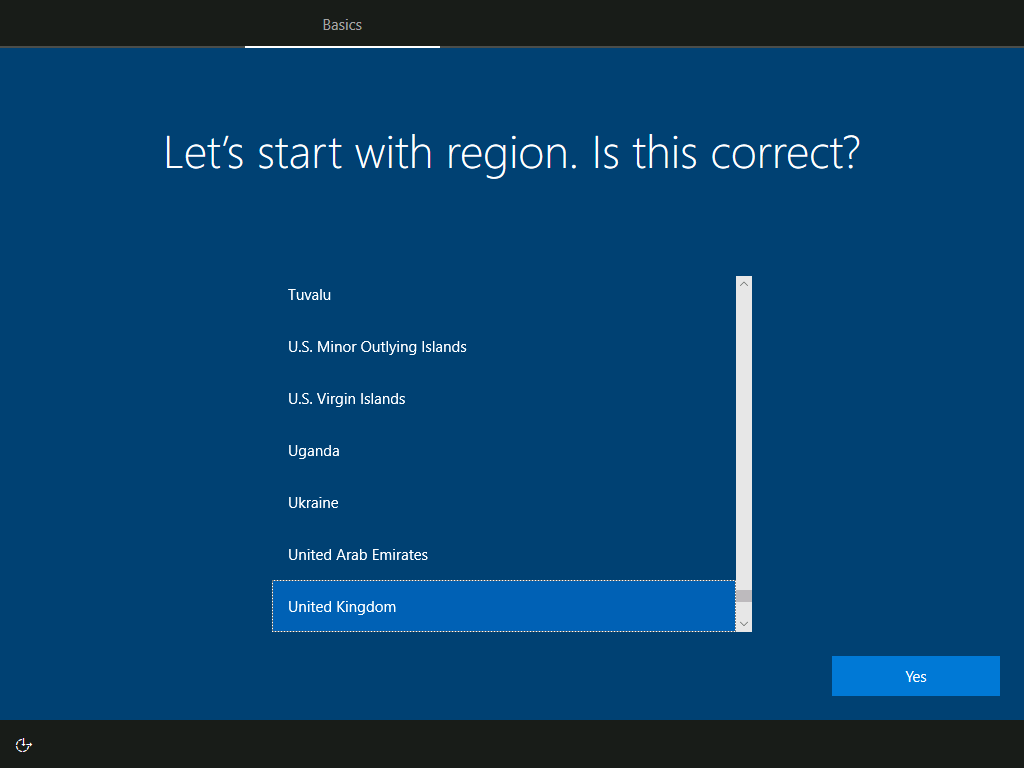
Why do you need to run Sysprep (Generalize) on a Windows 10 PC? What does the command do?
If you’re reading this, there is a chance that you will know why you need to run Sysprep. When you need to create an OS image for Windows 10, you need to run Sysprep first.
Running Sysprep removes all user customizations like keyboard and time zone. This returns Windows to boot to the point where a user can customize the OS.
In other words, when you run the Sysprep command in Windows 10 with the /generalize option, it removes individual details from your Windows installation.
Therefore, when you create a Windows image from the Windows installation, you can safely install it on another computer. It is important to mention that you still need to run Sysprep even if both computers have the same hardware.
In addition to using the /generalize option, Sysprep supports another option /oobe. When you include the /oobe option, Sysprep prepares Windows to restart into OOBE mode.
The OOBE mode allows a user to customize Windows 10. For example, when Windows 10 starts in OOBE mode, you can create a user account, rename the computer, and perform other customization tasks.
For a full list and explanation of the Sysprep command, see the Microsoft Sysprep documentation page – Sysprep Command-Line Options.
Options To Run Sysprep (Generalize) In Windows 10
You can run Sysprep by double-clicking Sysprep.exe located in the “%WINDIR%system32sysprep” directory. Alternatively, you can run Sysprep via command prompt.
In the next two sub-sections, I will walk you through the steps in each method.
How To Run Sysprep (Generalize) From Sysprep.exe
- Right-click the Windows Start menu and select Run.
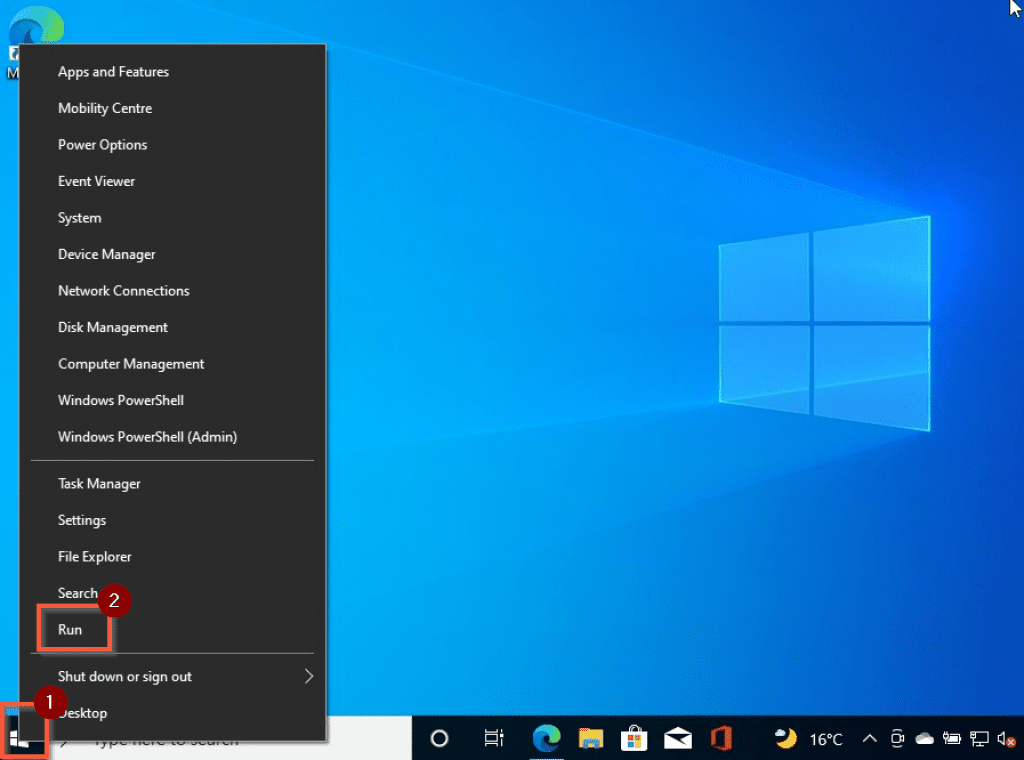
- Then, in the Run window, enter the command below and click OK…
%WINDIR%system32sysprep
You can copy and paste the command to make it easier for you.
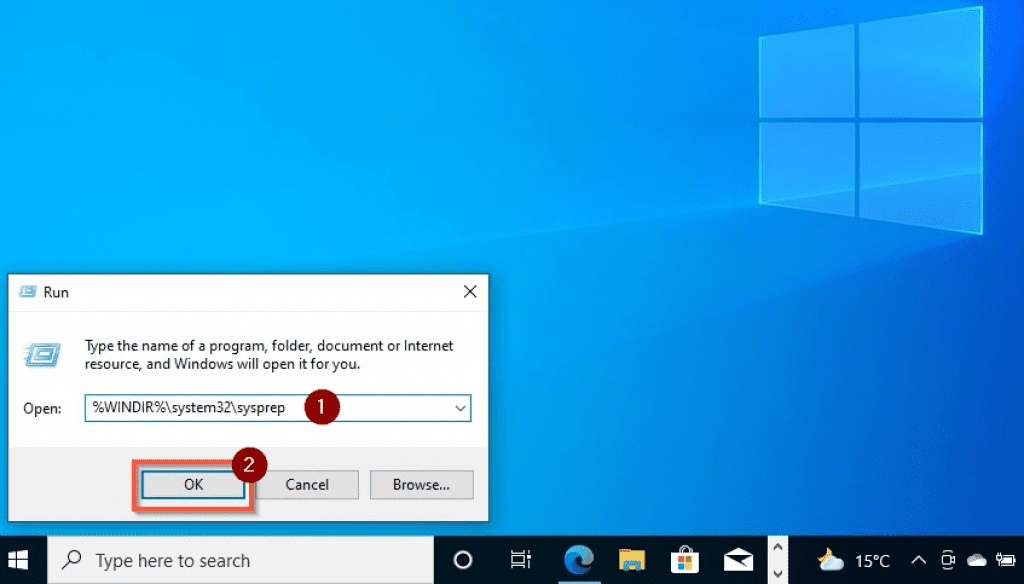
- When the sysprep folder opens, double-click sysprep.exe. Double-clicking sysprep.exe opens the Sysprep program with OOB selected by default.
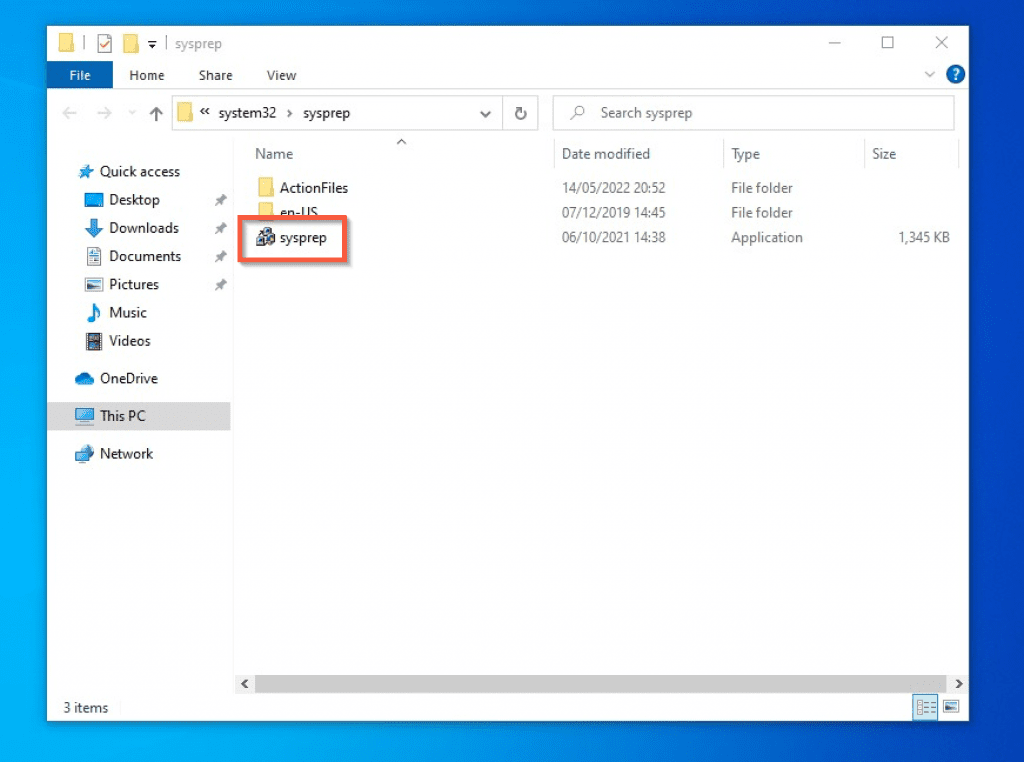
- Then, check the Generalize checkbox on the System Preparation Tool pop-up window. Next, select whether you want Sysprep to Restart or Shutdown Windows 10 when it completes running.Finally, click OK. Sysprep will take a while to run – see the second screenshot below.
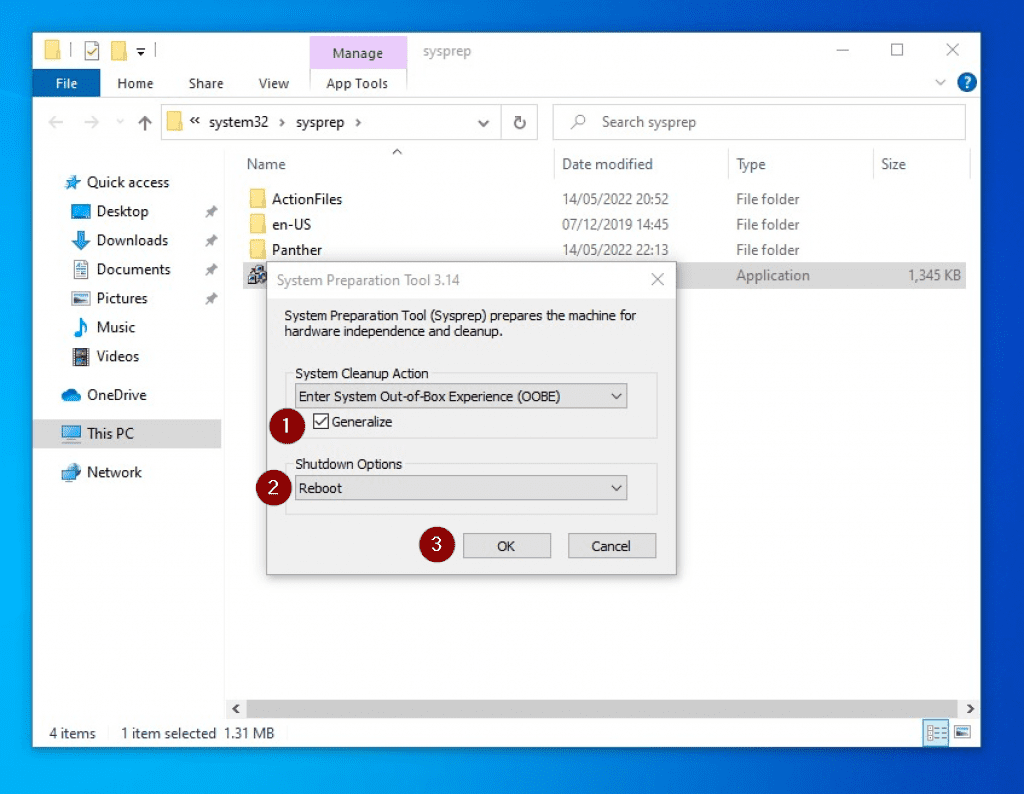
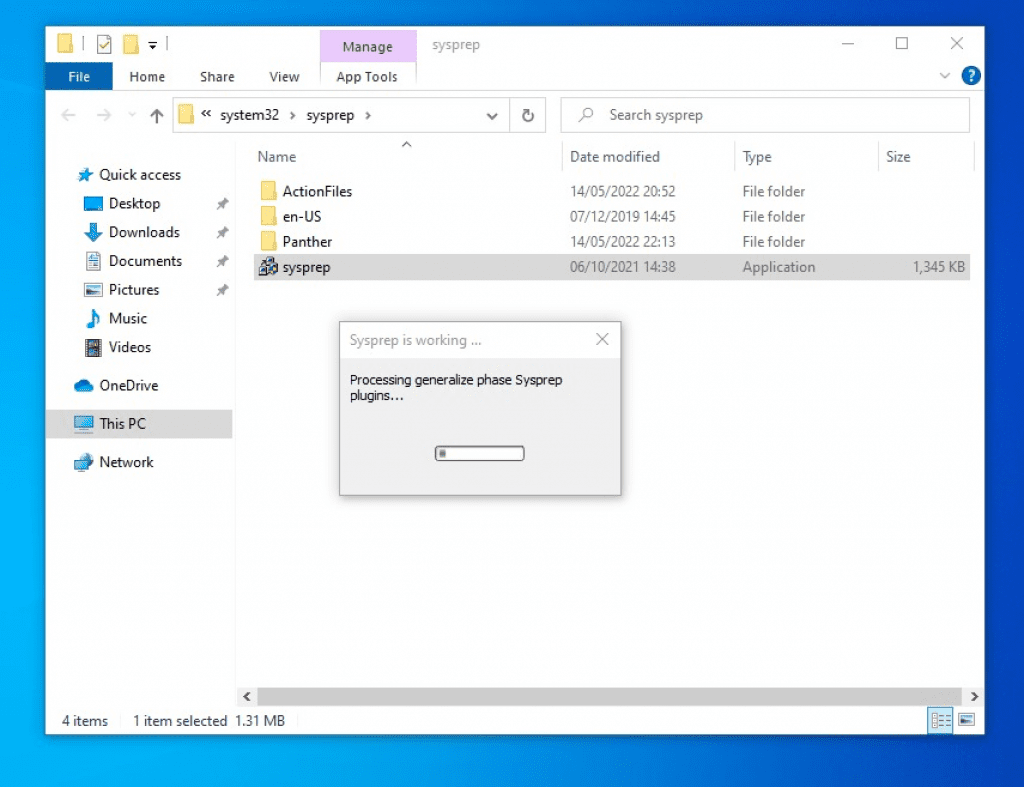
- When Sysprep finishes preparing Windows 10 with the generalize and oobe options, it’ll either shut down or restart.

When you start Windows 10 after running Sysprep, the Operating System will boot into the OOBE mode. See the screenshot below for details.
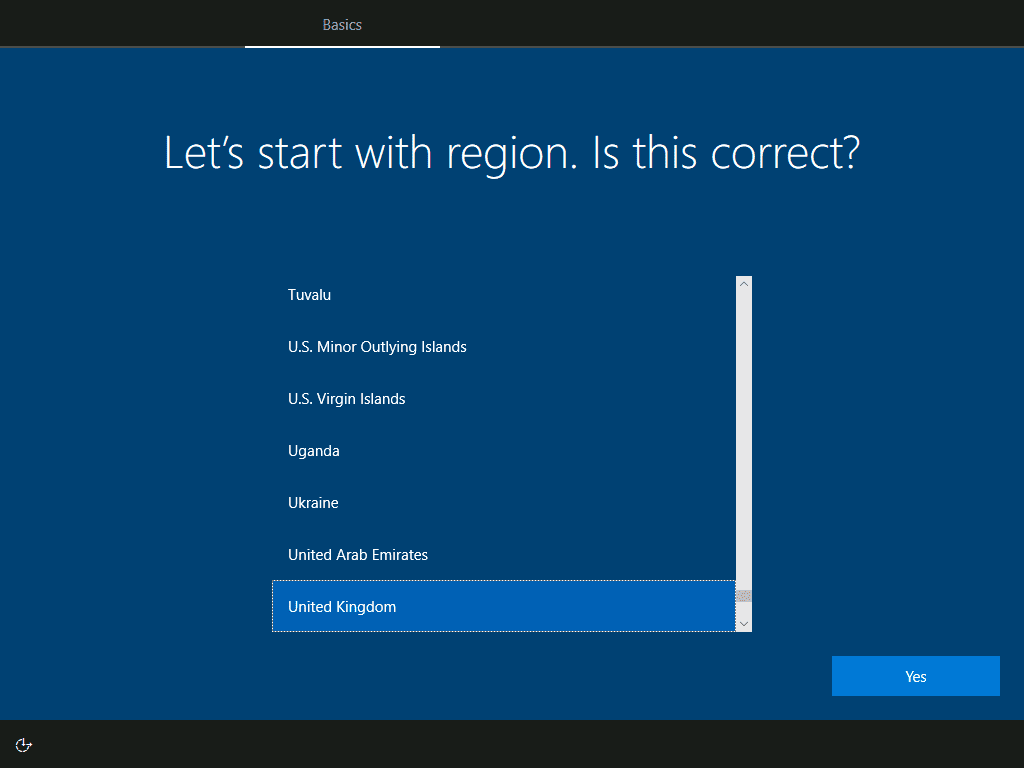 In essence, if you create an OS image with the installation, the Windows 10 installed with the image will start from here.
In essence, if you create an OS image with the installation, the Windows 10 installed with the image will start from here.
How To Run Sysprep (Generalize) From Command Prompt
- Enter command prompt on the Windows 10 search box. Then, click Run as administrator on the details pane of the selected command prompt window.
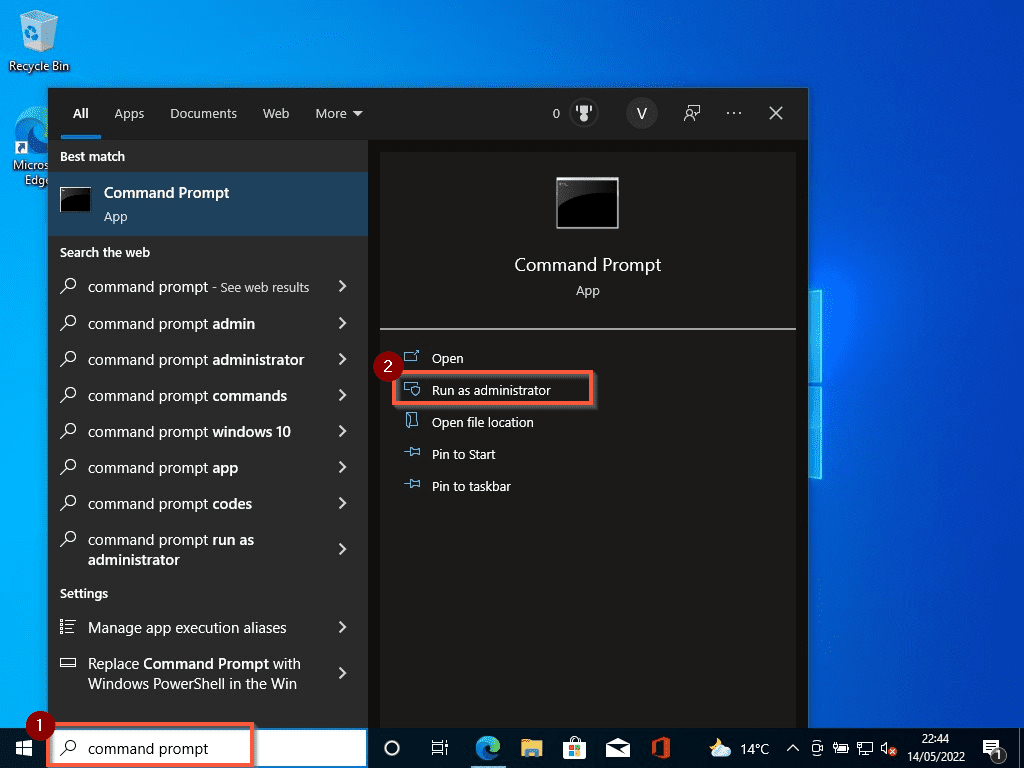
- Windows 10 will open the User Account Control window, requesting you to grant the program access. Click Yes.
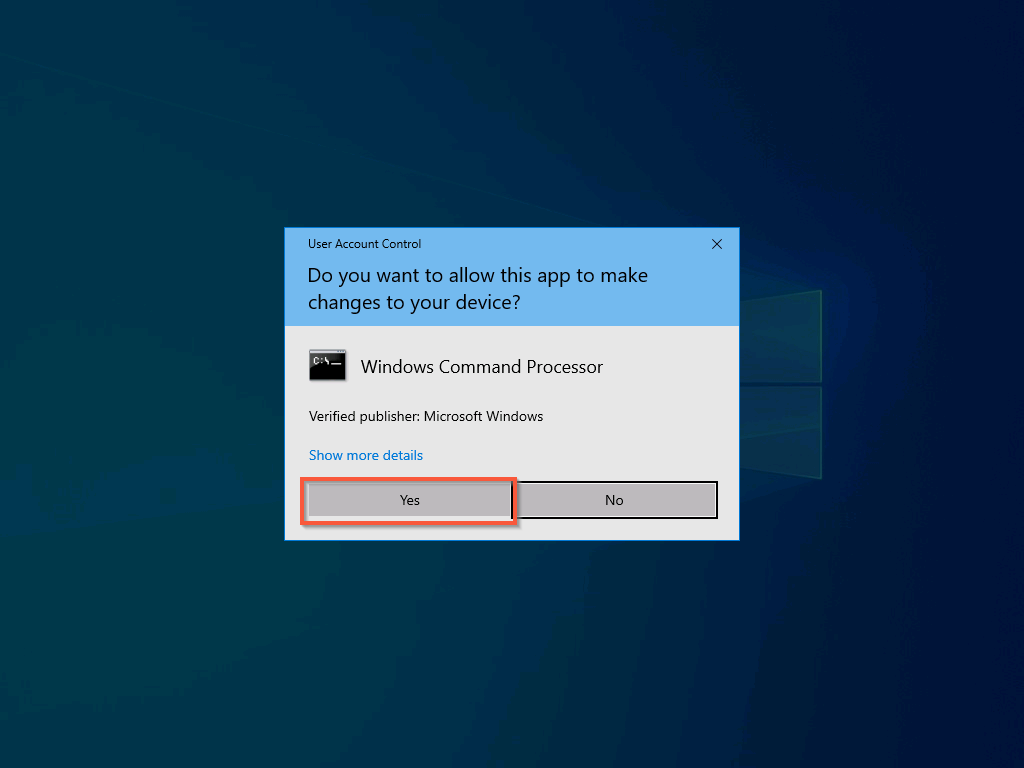
- Then, when the command prompt opens, enter the commands below and press enter. Run the first command first, before the second command.
The first command changes the directory of the command prompt to the Sysprep directory. Then, the second command runs the Sysprep command.
To reduce the possibility of making a mistake with the command, I recommend that you copy it.
CD %WINDIR%system32sysprep
Sysprep /generalize /shutdown /oobe
When you run the Sysprep command, the tool will take some time to run. Then, when it finishes preparing Windows, it will shut down the computer.
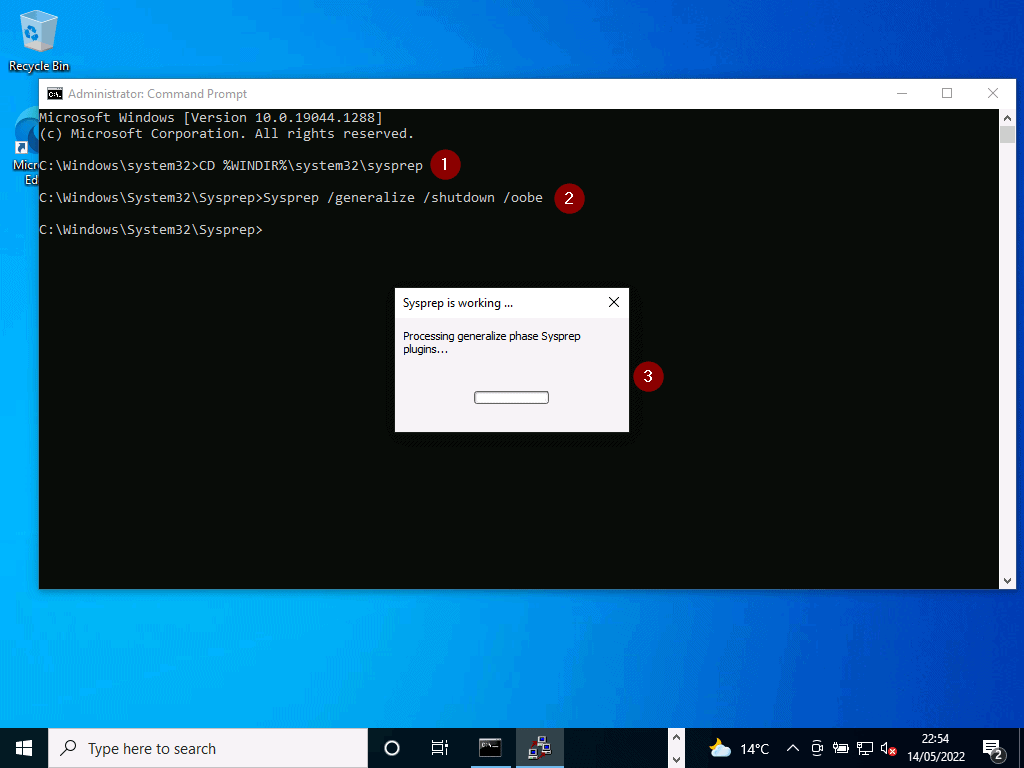
Sysprep (Generalize) In Windows 10: Frequently Asked Questions

1. What Is Sysprep Used For?
Sysprep (System Preparation Tool) is used to prepare a Windows Operating System for use in creating an OS image. When you run Sysprep with the generalize option, Sysprep removes individual details from the Windows installation.
This ensures that when you use the Windows 10 installation to create an image, you can safely install it on another computer.
2. How Do I Run Sysprep On Windows 10?
You can run Sysprep on Windows 10 in two ways. Firstly, you can run Sysprep.exe located in “%WINDIR%system32sysprep”.
Alternatively, you can run Sysprep via command prompt.
3. Do You Still Need To Sysprep Windows 10?
Yes, it is recommended that you Sysprep Windows 10 if you intend to use the installation to create an OS image you want to install on other computers.
4. What Does Windows 10 Sysprep Generalize Do?
The Windows 10 Sysprep command with the generalize option removes all unique information from the computer. The aim is so you can create an OS image from the Windows 10 installation.
Then, use the image to install Windows 10 on other computers safely.
5. Does Sysprep Generalize Remove Users?
The Sysprep command with the generalize option alone may not remove users. To ensure that users are removed from the computer, run sysprep with the generalize and oobe options together.
Sysprep (Generalize) In Windows 10: My Final Thoughts

If you want to safely deploy Windows 10 OS images to multiple computers, running Sysprep on the Windows 10 installation is recommended. Then, create an OS image from the Windows 10 installation.
When you run Sysprep, it removes unique configurations like computer names from the installation.
Do you want to create Windows 10 or Windows 11 images to deploy to multiple computers? Or need an expert to help you automate your Windows 10 or Windows 11 deployment to multiple computers?
We can help. For a no-obligation conversation, send us an email – at [email protected].
I hope you found our Windows 10 Sysprep guide valuable? If you found it useful, click Yes to Was this helpful? below.
You may also furnish us with more detailed feedback or share your experience with Sysprep in Windows 10 with other readers. Use the “Leave a Reply” form at the end of this page to share your thoughts.
Finally, for more Windows 10 Itechguides, visit our Windows 10 How-to page. You may also find our Windows 11 How-to page very informative.
Source by www.itechguides.com
![How To Run Sysprep (Generalize) In Windows 10 [2 Methods]](https://regionalposts.com/wp-content/uploads/2022/05/Sysprep-Windows-10-Generalize-2-Methods-750x375.jpg)
